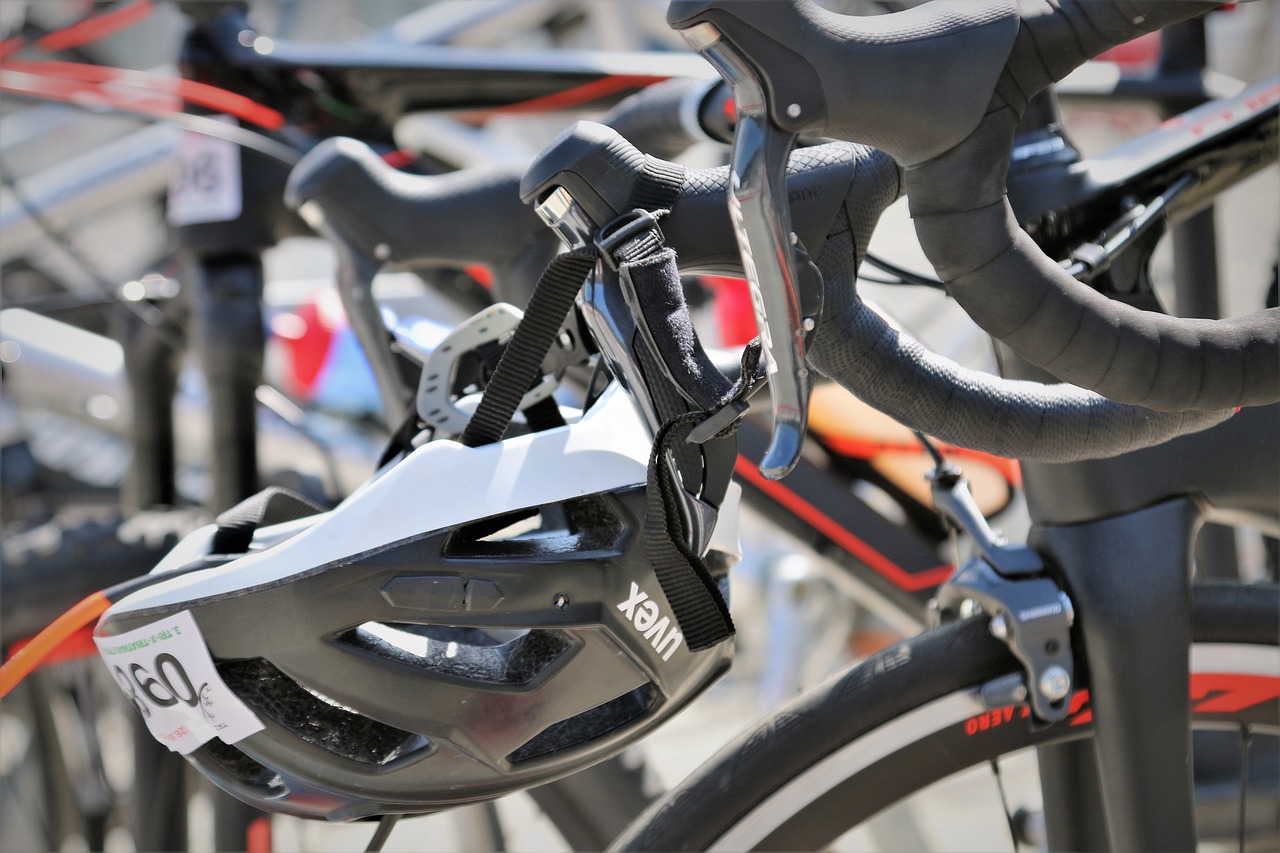
Essential Bike Gear: A Complete Guide for New Cyclists
Cycling is an exhilarating activity that offers a combination of exercise, transportation, and adventure. Whether you’re new to cycling for commuting, fitness, or leisure, investing in the right gear is essential for safety, comfort, and performance. For new cyclists, understanding what equipment is truly necessary can be overwhelming. From protective gear to maintenance tools, this guide will walk you through the essential bike gear that will enhance your experience and keep you safe on the road.
1. Bike Helmet: The Foundation of Safety
A helmet is the most critical piece of gear for every cyclist. Regardless of your riding style or terrain, protecting your head should always be a top priority. Bike helmets are designed to absorb impact and reduce the risk of serious injury in case of an accident.
How to Choose the Right Helmet:
- Fit: The helmet should sit level on your head and fit snugly without being uncomfortable. Look for adjustable straps and a retention system to ensure a secure fit.
- Ventilation: Helmets with proper ventilation keep your head cool during long rides. This is especially important for road cycling or riding in hot climates.
- Safety Standards: Look for certifications like CPSC, CE, or ASTM to ensure the helmet meets safety standards.
- Visibility: Some helmets come with reflective materials or integrated lights, which enhance visibility during low-light conditions.
2. Bike Lock: Protect Your Investment
As a new cyclist, you’ve likely invested in a quality bike, and you’ll want to keep it safe. A bike lock is essential for preventing theft, especially if you plan to leave your bike unattended in public areas.
Types of Bike Locks:
- U-Locks: U-locks are among the most secure options due to their strong design. They are resistant to cutting and leverage attacks.
- Chain Locks: Chain locks offer flexibility in securing your bike to different objects, but they can be heavy. Choose a hardened steel chain for added security.
- Folding Locks: These compact locks are a good balance between security and portability. They are lighter than U-locks but still offer a decent level of protection.
- Cable Locks: Cable locks are light and easy to carry, but they provide less security than U-locks or chain locks. They are better suited for low-risk areas or as secondary locks.
3. Cycling Apparel: Clothing for Comfort and Performance
Wearing the right cycling apparel can significantly enhance your comfort during rides. Cycling clothing is designed to wick away sweat, reduce wind resistance, and prevent chafing.
Key Apparel Pieces:
- Padded Shorts/Bibs: Padded cycling shorts or bibs provide cushioning and support during long rides, reducing pressure on the sit bones.
- Moisture-Wicking Jersey: A cycling jersey made from breathable, moisture-wicking fabric will keep you cool and dry. Many jerseys feature pockets for storing small items like energy bars or your phone.
- Cycling Gloves: Gloves offer grip, comfort, and protection. They also reduce the impact on your hands, preventing numbness and blisters.
- Cycling Shoes: If your bike has clipless pedals, investing in cycling shoes with cleats will improve pedaling efficiency. For flat pedals, choose shoes with stiff soles for better power transfer.
- Weather Gear: Consider adding a lightweight, windproof jacket or rain gear to your wardrobe for unpredictable weather conditions.
4. Bike Lights: Stay Visible, Day or Night
Bike lights are crucial for safety and visibility, even during the day. Proper lighting ensures you are seen by motorists, pedestrians, and other cyclists, reducing the risk of accidents.
Types of Bike Lights:
- Front Lights: A bright white front light helps you see the road ahead and makes you more visible to oncoming traffic. Choose a light with at least 200 lumens for urban commuting or 400+ lumens for riding in unlit areas.
- Rear Lights: Red rear lights ensure you are visible to drivers from behind. Some rear lights have multiple modes, such as flashing or steady beams, to increase visibility.
- Helmet Lights: A light mounted on your helmet can provide additional illumination and improve visibility in all directions.
- Reflectors: In addition to lights, ensure your bike has reflectors on the wheels, pedals, and rear to increase visibility at night.
5. Bike Pump: Maintain Optimal Tire Pressure
A bike pump is an essential tool for maintaining proper tire pressure, which affects your bike’s performance, comfort, and safety. Under-inflated tires increase rolling resistance and the risk of punctures, while over-inflated tires can lead to a rougher ride.
Types of Bike Pumps:
- Floor Pumps: Floor pumps are efficient and ideal for home use. They have a large barrel for quickly inflating tires and often include a pressure gauge for accurate inflation.
- Mini Pumps: A mini pump is portable and can be attached to your bike frame. It’s perfect for emergency repairs during a ride.
- CO2 Inflators: CO2 inflators are compact devices that use compressed CO2 cartridges to quickly inflate tires. They are convenient for road cyclists who need to save space and weight, but they are typically single-use.
6. Bike Tools: Be Ready for On-the-Go Repairs
A well-stocked bike tool kit ensures you’re prepared for minor repairs and adjustments while on the road. Many bike problems, like a flat tire or loose bolts, can be easily fixed with the right tools.
Essential Bike Tools:
- Multi-Tool: A cycling-specific multi-tool includes Allen keys, screwdrivers, and a chain tool for fixing a range of common issues.
- Tire Levers: These small plastic levers help you remove tires from the rims when fixing a flat.
- Patch Kit/Spare Tube: Always carry a patch kit or a spare inner tube to fix punctures on the go.
- Chain Lube: Regularly lubricating your chain reduces wear and improves shifting performance. Carry a small bottle of lube for long rides.
- Mini Pump or CO2 Inflator: As mentioned, a portable pump or CO2 inflator is essential for reinflating tires after a flat repair.
7. Bike Rack: Convenient Transportation and Storage
For cyclists who commute or travel frequently with their bikes, a bike rack is a must-have. Bike racks allow you to transport your bike securely and conveniently on your car.
Types of Bike Racks:
- Roof-Mounted Racks: These racks mount your bike to the roof of your car, leaving the trunk accessible. They are ideal for those with multiple bikes but can be tricky to load.
- Hitch-Mounted Racks: Hitch racks are easy to load and can carry multiple bikes. They attach to your car’s hitch and offer a secure way to transport your bike.
- Trunk-Mounted Racks: These are budget-friendly options that strap onto your car’s trunk. They are lightweight but may obstruct your rearview and have a lower weight capacity.
8. Hydration Solutions: Stay Hydrated on the Road
Staying hydrated is crucial, especially on long rides. Water bottles and hydration packs allow you to carry water conveniently and stay refreshed during your ride.
Hydration Options:
- Water Bottle and Cage: A water bottle mounted in a cage on your bike’s frame is the most common and convenient hydration solution for most cyclists.
- Hydration Packs: Hydration packs are worn like backpacks and feature a water reservoir with a drinking tube. They are ideal for mountain bikers or cyclists who need to carry more water over long distances.
9. Bike Bag or Panniers: Carry Essentials with Ease
When you’re out for a long ride or commuting, having a way to carry essentials like your phone, wallet, tools, and snacks is important. Bike bags or panniers offer practical storage solutions.
Types of Bike Bags:
- Saddle Bags: These compact bags attach under the bike seat and are perfect for carrying small items like tools, keys, or a spare tube.
- Frame Bags: Frame bags fit within the triangle of your bike’s frame and offer additional storage without affecting balance.
- Panniers: Panniers are larger bags that attach to a rear rack, offering more space for commuting, grocery shopping, or touring.
10. Bike Mirrors: Enhance Your Road Awareness
Bike mirrors are a simple yet effective way to increase your awareness of surrounding traffic, especially when riding in busy urban areas. A rearview mirror attached to your handlebars or helmet helps you monitor cars and other cyclists without turning your head.
Conclusion
For new cyclists, having the right bike gear is essential for safety, comfort, and enjoyment. From helmets and lights to pumps and tools, each piece of equipment plays a crucial role in ensuring a smooth and worry-free ride. By investing in quality gear and regularly maintaining your bike, you’ll set yourself up for success on your cycling journey. Remember, safety and preparation are key to enjoying every ride, whether you’re commuting to work or exploring new trails on the weekend.
By equipping yourself with these essentials, you can ride confidently and focus on what matters most—enjoying the freedom and thrill that comes with cycling.
